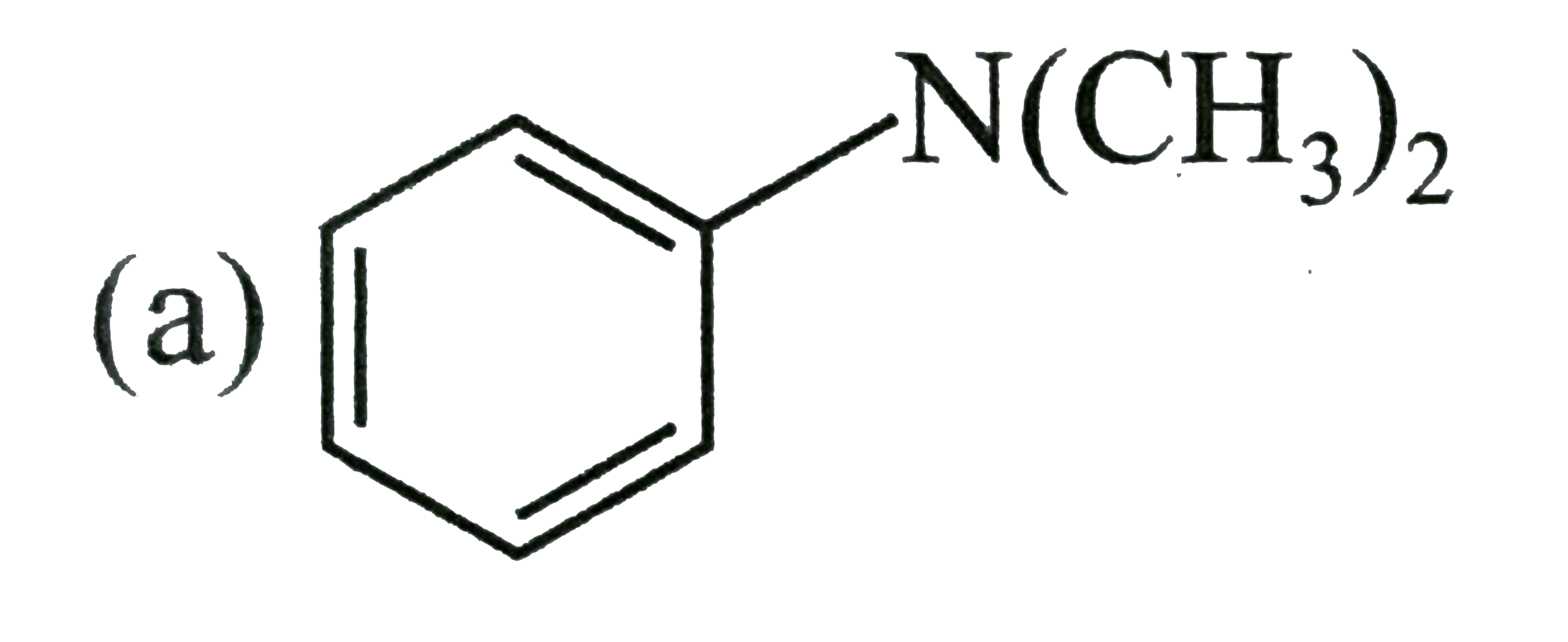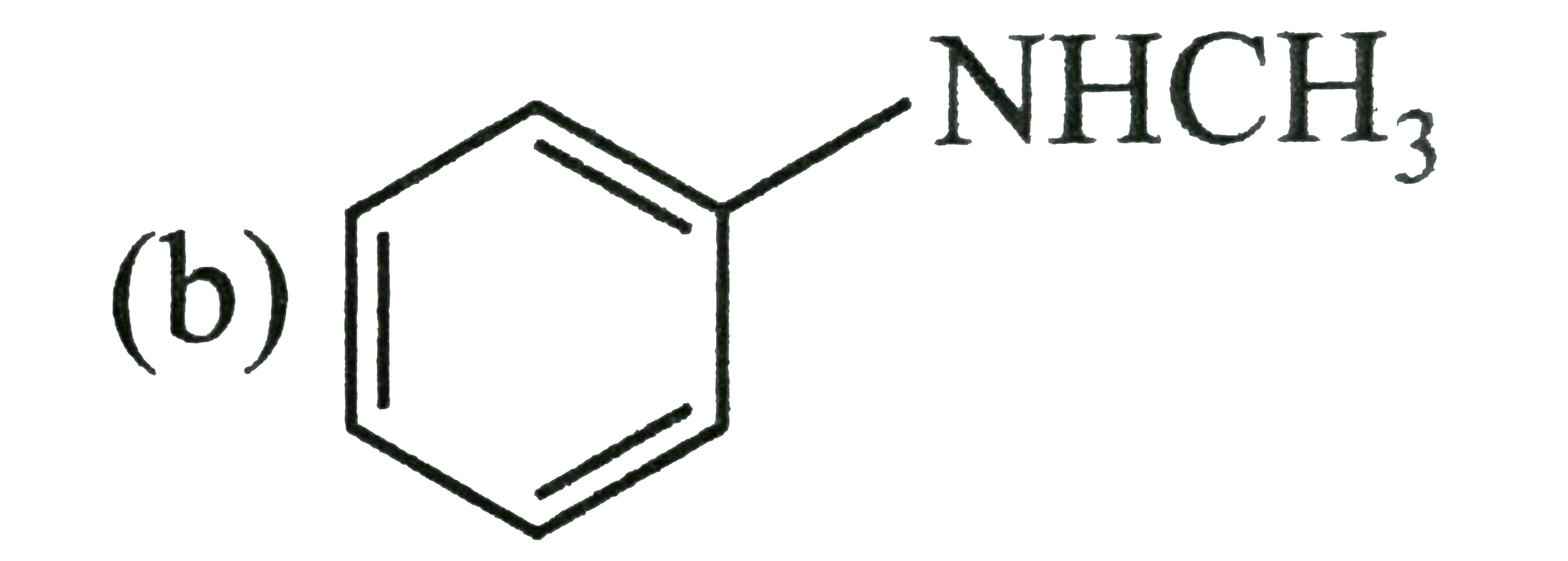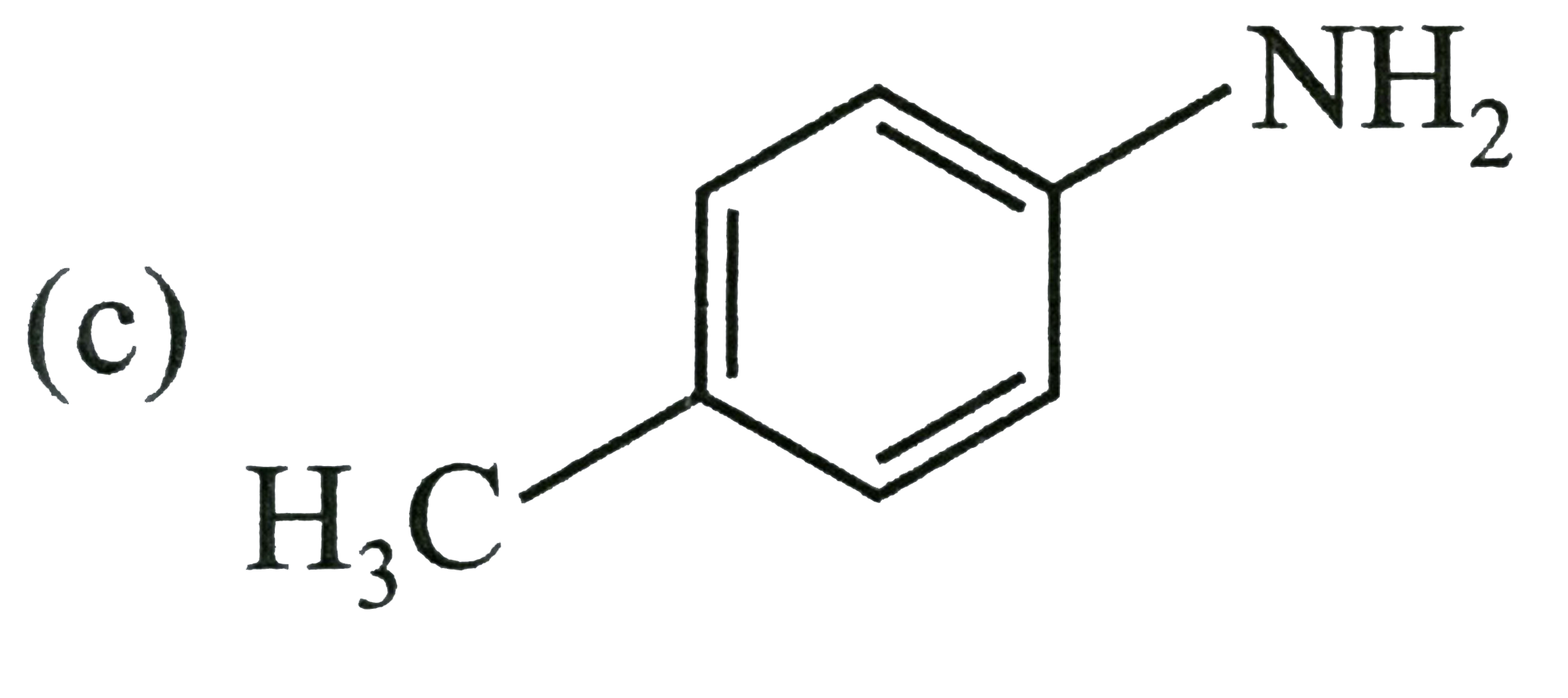A colourless liquid is sparingly soluble in warm water to which it gives feebly alkaline. On treating with and dil in the cold solution, it yields a solution which reacts with an alkaline solution of -naphthol to give an orange yellow precipitate. Compound A is -
The correct Answer is:D
To solve the problem, we need to identify the compound A based on the given clues. Let's break down the information step by step.
Step 1: Analyze the properties of compound A
- Colorless liquid: This indicates that compound A is likely a simple organic compound.
- Boiling point of 184°C: This suggests that compound A may be an aromatic amine, as many amines have higher boiling points due to hydrogen bonding.
- Sparingly soluble in warm water and gives a feebly alkaline solution: This is characteristic of amines, which can act as weak bases in water.
Hint: Consider the properties of amines and their solubility in water.
Step 2: Reaction with NaNO2 and dilute HCl
- When compound A is treated with sodium nitrite (NaNO2) and dilute hydrochloric acid (HCl) in a cold solution, it undergoes a diazotation reaction. This indicates that compound A is likely a primary aromatic amine, which can form a diazonium salt.
Hint: Recall that primary aromatic amines can be converted to diazonium salts through diazotation.
Step 3: Formation of a diazonium salt
- The reaction produces a diazonium salt, which is stable for aromatic amines but unstable for aliphatic amines. The diazonium salt will then react with beta-naphthol.
Hint: Identify the structure of the diazonium salt formed from an aromatic amine.
Step 4: Reaction with beta-naphthol
- The diazonium salt reacts with an alkaline solution of beta-naphthol to give an orange-yellow precipitate. This is characteristic of azo compounds formed from the reaction of diazonium salts with phenolic compounds.
Hint: Azo compounds are typically formed from the coupling of diazonium salts with phenols.
Step 5: Identify compound A
- Given the clues and the reactions, we can deduce that compound A is likely aniline (C6H5NH2). Aniline is a primary aromatic amine that fits all the criteria:
- It is a colorless liquid with a boiling point around 184°C.
- It is sparingly soluble in water and gives a feebly alkaline solution.
- It can be converted to a diazonium salt and reacts with beta-naphthol to produce an orange-yellow precipitate.
Final Answer: Compound A is aniline (C6H5NH2).
- Colorless liquid: This indicates that compound A is likely a simple organic compound.
- Boiling point of 184°C: This suggests that compound A may be an aromatic amine, as many amines have higher boiling points due to hydrogen bonding.
- Sparingly soluble in warm water and gives a feebly alkaline solution: This is characteristic of amines, which can act as weak bases in water.
- When compound A is treated with sodium nitrite (NaNO2) and dilute hydrochloric acid (HCl) in a cold solution, it undergoes a diazotation reaction. This indicates that compound A is likely a primary aromatic amine, which can form a diazonium salt.
- The reaction produces a diazonium salt, which is stable for aromatic amines but unstable for aliphatic amines. The diazonium salt will then react with beta-naphthol.
- The diazonium salt reacts with an alkaline solution of beta-naphthol to give an orange-yellow precipitate. This is characteristic of azo compounds formed from the reaction of diazonium salts with phenolic compounds.
- Given the clues and the reactions, we can deduce that compound A is likely aniline (C6H5NH2). Aniline is a primary aromatic amine that fits all the criteria:
- It is a colorless liquid with a boiling point around 184°C.
- It is sparingly soluble in water and gives a feebly alkaline solution.
- It can be converted to a diazonium salt and reacts with beta-naphthol to produce an orange-yellow precipitate.
Topper's Solved these Questions
Similar Questions
Amongst the compounds given, the one that would form a brilliant colored dye on treatment with NaNO2 in dil. HCI followed by addition to an alkaline solution of β-naphthol is
View SolutionAmong the compounds given, the one that would form a brilliant colored dye to on treatment with NaNO2 in dilute HCl followed by addition to an alkaline solution of β-napthol is:
View Solution
Knowledge Check
The amine which reacts with NaNO2 and dil. HCl to give yellow oily compound is___________.
AethylamineBisopropylamineCsec- butylamineDdimethylamineAmongst the compounds gives, the one that would form a brilliant colored dye on treatment with NaNO2 in dil. HCl followed by addition to an alkaline solution of β−naphthol is
A B
B C
C D
D
Amongst the compounds given, the one that would form a brilliant colored dye on treatment with NaNO2 in dil. HCl followed by addition to an alkaline solution of β-naphthol is
A B
B C
C D
D
Which of the following aqueous solution is colourless but gives yellow precipitate on adding lead acetate to it
View SolutionThe amine which reacts with NaNO2 and dil. HCl to give yellow oily compound is___________.
View SolutionWhich one of the following compounds on reaction with Na2O2 in alkaline medium gives yellow colour solution?
View SolutionWhich of the following pair(s) contain species, which react with each other on mixing their aquouos solutions to give yellow precipitate?
View SolutionAmongst the compounds given, the one that would form a brilliant coloured dye with NaNO2 in dil. HCl followed by addition to an alkaline solution of naphthol is
View Solution
